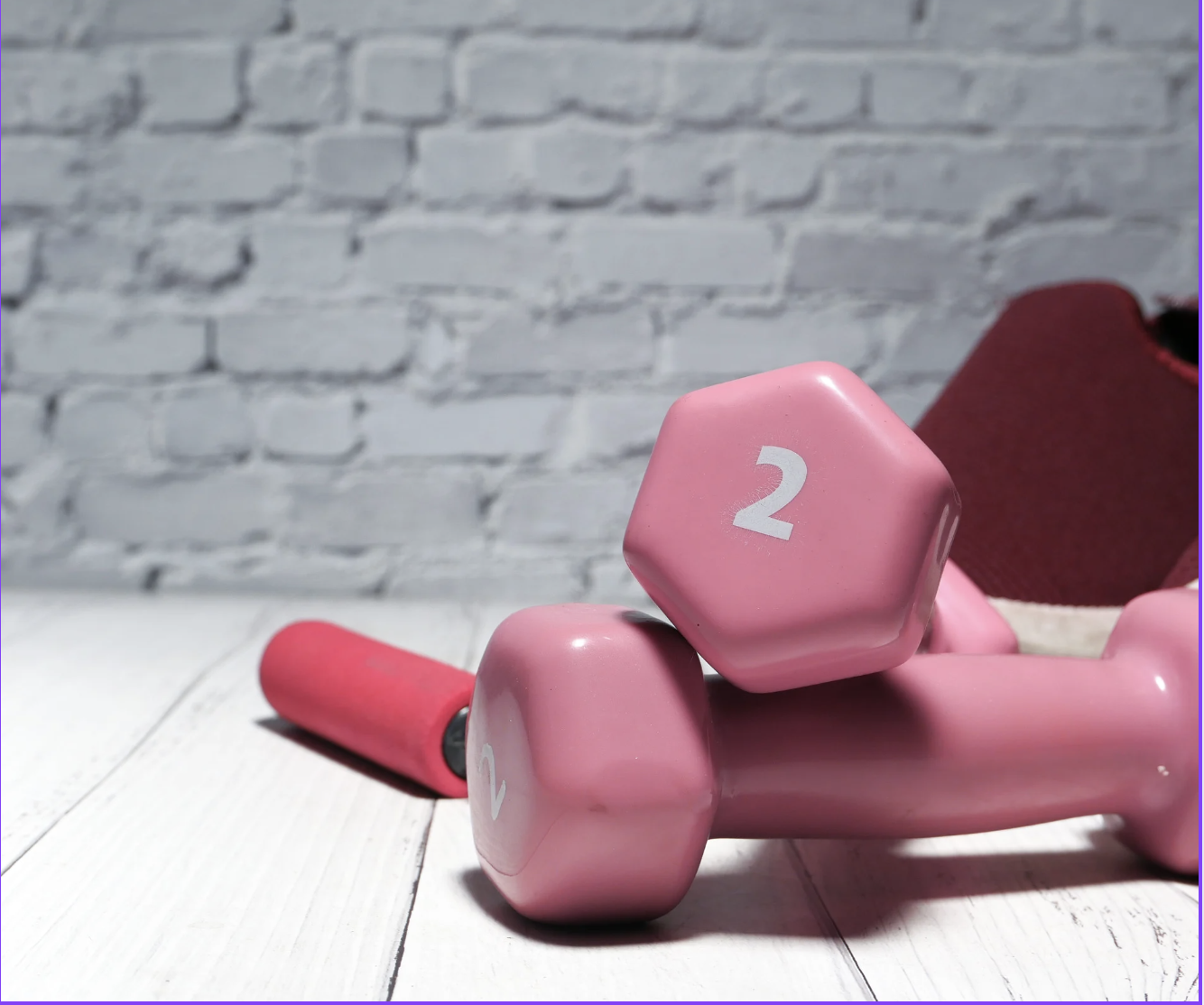The 12 Biggest Mistakes Beginner Lifters Make and How to Avoid Them
Starting your fitness journey is exciting, but it can also feel like a maze filled with confusing & conflicting advice. Between Instagram influencers, that friend who swears by her detox tea, and your coworker who thinks he’s the next Arnold, it’s easy to get overwhelmed. But don’t worry, I’m here to help you navigate through the noise, avoid the common pitfalls, and crush your goals with confidence. Let’s dive in!
Lifting Too Quickly
This is one of the most common mistakes I see with brand new clients. They’re lifting like the weights have a curfew and need to be home by 9. You don’t need to go that fast. It’s better to slow down and learn to control the weights.
Take your time, especially on the eccentric part of the lift (that’s the lowering phase where your muscles are lengthening).
Lowering the weight with control will help you avoid injuries, improve your technique, enhance neuromuscular control (teaching your body to control heavier loads more effectively), improve your stability, and enhance muscle growth.
Pro Tip: A good tempo to start with is 3:1:2. This means lower the weight in a full 3 seconds, pause for a second at the bottom, and lift it back up in 2 seconds. As you become more experienced, you can experiment with other tempos to train for different adaptations.
Neglecting Warm-Ups
You’re eager to hit the bench press, but skipping a warm-up is like driving a car without letting the engine warm up. A proper warm up increases blood flow, improves flexibility, and reduces injury risk. Take 5–10 minutes to prime your body with dynamic stretches, light cardio, and mobility.
It’s also beneficial to perform a couple of light warm up sets of your heavy compound exercises. This will prep your body for those movements, and not only help you prevent injuries, but increase the amount you can lift.
Try This: Before leg day, do some ankle and hip mobility drills. For the upper body, don’t forget to prime those shoulders.
Choosing a Weight That’s too light
A lot of beginners are afraid to push themselves. At first, yes, you want to go light until you get the movement down, and get more comfortable, but then, it's go time!
The goal is to pick a weight that brings you close to failure for the desired reps. Stopping 1-3 reps shy. Most people are terrible at gauging where this is. There was a study done, where they had people guess how many reps shy of failure they were, and the average person was off by over 5 reps. That’s crazy haha. This means they still had a lot left in them, and weren’t pushing themselves as hard as they thought they were.
How To Test This: Try this with exercises where your form is good, and it’s not too risky to go to failure. On the last set perform as many reps as possible using the same weight you used in the previous set. If you were able to perform 15 reps, and your previous set only 8, you know you’re not lifting heavy enough.
I recommend doing this periodically for a vector check.
Choosing a Weight That is Too Heavy
On the flip side there are people who go too hard too soon. You want to choose a weight that allows you to perform the exercise with proper form and full range of motion. If you can’t squat to parallel yet, don’t add more weight to the bar. You don’t want to be strengthening a partial range of motion.
Make sure the weight you choose is something you can control, and doesn’t cause your form to break down too early.
Lift Smart: You will get better results using a lighter weight that you can perform in a full range of motion, than continuing to add weight, while not performing the exercise in a full stretch. If you can’t touch the bar to your chest in a bench press, then I recommend lowering the weight until you can.
Ignoring Nutrition
Your workout is only half the battle. What you eat matters just as much. If you aren’t eating enough of the right foods to fuel your workouts, you will run into problems and not get the results you’re looking for.
Prioritize whole foods, and protein. Protein is like the building blocks for your muscles, and most people, especially women, don’t get enough.
Want More Info: Click [here] to read an article on how to calculate your calorie and protein needs.
Focusing Only on Isolation Exercises
I think a lot of beginners shy away from compound exercises, because they look scary and are harder to learn. This would be a mistake, because they are crucial for your progress.
Compound exercises are ones that utilize multiple muscles and joints. These are very effective, and efficient, because you can train multiple muscles at the same time. Think of a bench press. You are training your chest, shoulders, and triceps all at once, compared to a bicep curl where you are isolating your biceps.
Compound exercises also are better for building strength! They will improve your neuromuscular coordination, and in turn make you stronger and have more control over the bar.
One of my favorite things about compound exercises is they are easier to scale. You can only get so strong, so quickly at lateral raises, but with a deadlift you may be able to add weight to the bar almost every week for quite some time. This is very motivating, and keeps you coming back for more.
Both Are Important: You want to utilize both isolation and compound exercises. Compound exercises are more taxing on the body, so you should include isolation exercises to add volume to different muscle groups without getting too tuckered out.
Choosing the Wrong Exercises
Choose the most effective exercises when making your workout plan. You want the ones that are going to give you the biggest bang for your buck. These do not include the new crazy exercise that (insert fitness influencer) is doing. They may look cool, but sticking to the basics works best. You know, the boring stuff.
Focus on squat patterns, hinge patterns, lunge patterns, and pushing and pulling exercises. There are many different variations of these that are effective.
Stay away from combo exercises. This is different from compound exercises. Compound exercises are one exercise that utilizes multiple muscle groups at once, where a combo exercise combines different exercises into one. For example, a squat to a shoulder press (thruster). This won’t be very effective for your legs, because most likely you can squat more than you can press overhead. Perform these exercises separate instead.
Quick Tip: Find a good program to follow, that’s designed by someone who knows what they’re doing!
Not Resting Long Enough Between Sets
I get it. You may have come from a background of doing beach body workouts, or orange theory classes. You may think that you need to keep your heart rate up, and burn as many calories as possible. This is what I thought at one time too!
Instead, I want you to think about your workouts differently. Your goals in a strength training workout is to build muscle, and strength. Not to burn as many calories as possible. I don't want you to worry at all about how many calories you are burning. That’s not the point!
An effective strength training workout will have enough rests in between your sets to fully recover, and give the next set your all. Think about it. If you go from exercise to exercise without rest, you won’t be able to lift as much in your next set, which means you will have a hard time getting stronger or building muscle.
You need to progressive overload. Meaning do a little bit more this week, than you did last week. You will have a hard time doing that, and making progress if you don’t take a proper rest.
Compound exercises usually require a longer rest period (2-4mins), and isolation shorter (1-1:30). There are times when you will go from one exercise to another without rest. For example, in a superset, but keep in mind that these should be strategically programmed.
Pro Tip: If you are able to take a short rest and go right into your next set with a minimal break, then most likely you are not lifting heavy enough. Trust me, you will appreciate the break once you start lifting close to failure.
Doing Too Much Volume
One of the great things about being a beginner is that you can make progress while doing less! It’s not necessary to do 20 sets per muscle group per week. In fact, that will hinder your results. Your body can only build so much muscle at once, and it’s important to find the sweet spot, where you are optimizing your results.
As a beginner, doing just a couple of sets per muscle per week is enough to send the signal to your body to build muscle, because it’s more than you were doing before. I recommend starting at the lower end for volume and working it up as you become more experienced.
Don’t follow a workout plan designed for someone that’s been lifting for 5 years. That person needs to do a lot more to get their body to change than you do.
Pro Tip: Find a workout that is made for beginners, or cut the volume down of a program for a more advanced lifter. Aim for 6-10 sets per muscle group per week.
Ignoring Mobility
Mobility is important to be able to perform exercises with the correct form. As a beginner, you most likely have some work to do.
Common areas that people have issues with mobility are their ankles, hips, shoulders, and the thoracic region. A very common problem I see is tight ankles prohibiting clients from being able to squat properly, and to depth. Stretching them out before your workout can be very helpful.
Good News: One great thing about mobility is that it’s easier to maintain if you tackle it early. For example, if you work on loosening your ankles and consistently squat to a good depth, you’ll likely find you don’t need to stretch them as often. Strength training itself, like squatting, can help improve and maintain mobility over time.
Comparing Yourself to Others
It’s easy to look around the gym and feel intimidated by people who seem stronger or fitter. But remember: everyone starts somewhere. The only person you need to compete with is yourself.
Mindset Shift: Focus on your progress, not someone else’s. Celebrate small wins, like lifting more weight or nailing that squat form.
Giving Up Too Soon
Progress doesn’t happen overnight, and plateaus are part of the journey. Many beginners quit when they don’t see immediate results, but persistence pays off.
Stick With It: Celebrate small victories and remember why you started. Fitness is a marathon, not a sprint!
Final Thoughts
Starting your lifting journey is a big step, and making a few mistakes along the way is normal. It’s how you learn! The key is to stay patient, stay consistent, and most importantly, have fun. You’ve got this! Now, grab those weights, crush your workout, and show the gym who’s boss.
If you want a little more direction or a great program to follow for beginners. Click the link below for a FREE 6 Week Training Program! This program is just what you need to start your journey. It can be modified to be suitable for all skill levels!
Let’s GO!
Don’t know where to start? Try out this effective 6 week program for FREE!








